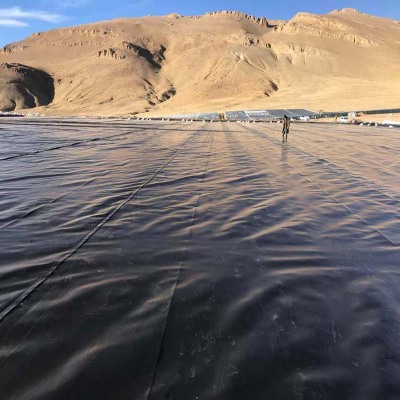
What are geotextiles used for?
2025-01-08 13:59
Geotextiles: A Deep Dive into Their Uses, Types, and Longevity
Road Construction: Geotextiles are extensively used in road construction to separate different layers of aggregate, prevent mixing, and enhance the overall stability and lifespan of the road. Woven geotextiles, in particular, are favored for their high tensile strength in this application. Erosion Control: Geotextiles effectively stabilize slopes, prevent soil erosion, and protect against the damaging effects of heavy rainfall and runoff. Drainage Systems: The permeable nature of certain Geotextile Fabric types, like needle-punched non-woven geotextiles, makes them ideal for drainage systems. They filter out fine soil particles, allowing water to pass through freely and preventing clogging. Retaining Walls: Geotextiles provide crucial reinforcement to retaining walls, increasing their stability and preventing soil movement behind the structure. Landfills: In landfill applications, geotextiles act as separation layers, preventing waste materials from contaminating the underlying soil and groundwater. Agriculture: Farmers and landscapers utilize Geotextile Fabric for various purposes, such as weed control, soil separation in planters, and improved drainage in fields.
Woven Geotextiles: As the name implies, these are manufactured using traditional weaving techniques, similar to how fabrics are made. Woven geotextiles are renowned for their exceptional strength and are commonly employed in projects requiring robust reinforcement, such as road construction and embankment stabilization. They can be further subdivided into: Polypropylene Woven Geotextile: Made from polypropylene fibers, offering excellent strength and chemical resistance. PET Woven Geotextile Fabric: Constructed using polyester (PET) fibers, providing high tensile strength and durability. Non-woven Geotextiles: These are produced by bonding fibers together, either through needle punching or heat bonding. Non-woven geotextiles are typically more permeable than their woven counterparts and excel in filtration and drainage applications. They can be subdivided into: Short Staple Needled Punched Geotextile Fabric: Made from short staple fibers that are mechanically interlocked using barbed needles, creating a highly permeable structure. Filament Geotextile: Constructed using continuous filaments, offering higher strength and durability compared to short staple versions. Composite Geotextiles: These are innovative materials that combine two or more geosynthetic materials, such as geogrids and geomembranes, to create a product with enhanced properties. For instance, a composite geotextile might combine the strength of a geogrid with the impermeability of a geomembrane, making it suitable for applications requiring both reinforcement and waterproofing. Finding a quality Geotextile Manufacturer is a key step in using these materials.








